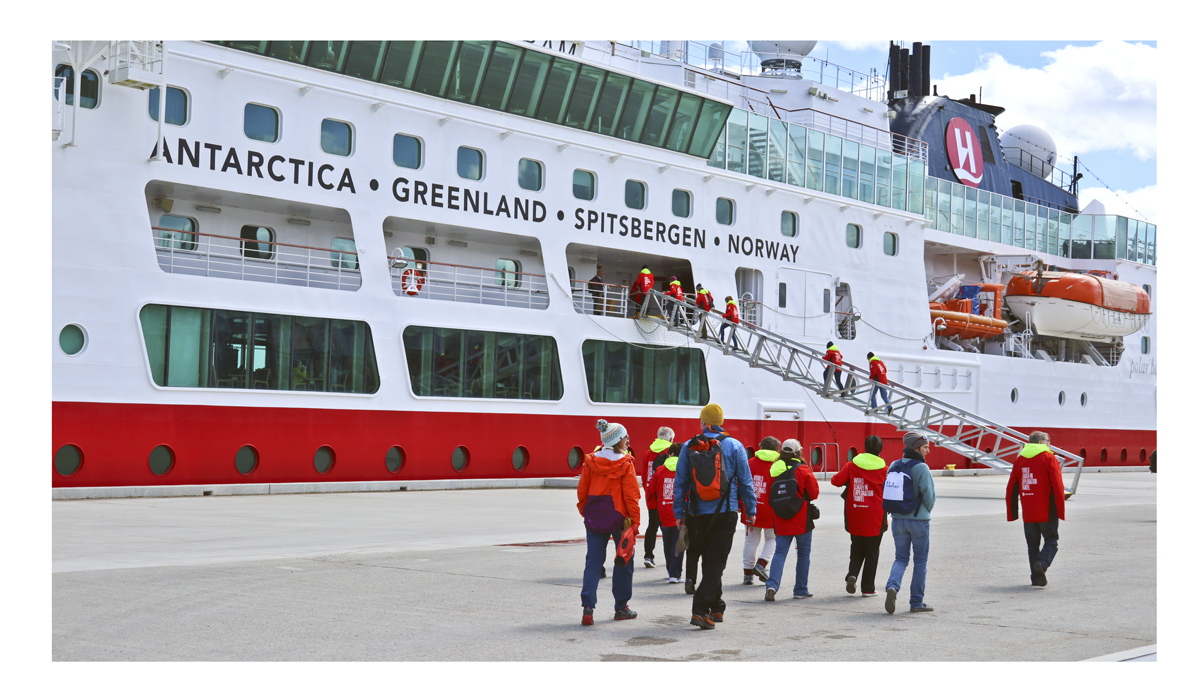
The Fram splashes its adventurous ambitions on its hull: Antarctica, Spitsbergen, Norway; penguins, whales, glaciers, Northern Lights.
Amid a current rush by many cruise lines to build expedition cruise ships, Norway’s Hurtigruten wants to remind everyone that they’ve been exploring remote locales on sturdy ships for 125 years. Starting in 1893 with coastal passenger service to outports in northern Norway, Hurtigruten (whose name means express route) has grown to a fleet of 14 ships doing cruises anywhere in the world where there’s ice.
And with two new ships coming soon, the company is making a pitch to get much better known in the North American market.
On a cruise aboard the MS Fram, that was purpose-built for pushing through icy seas around the North and South poles, the 318 guests on board were treated to a glimpse of the company’s past and ambitious future. It soon became clear that Hurtigruten has a unique style that sets it apart from other cruises. Here’s a translation for those who have never experienced it before:
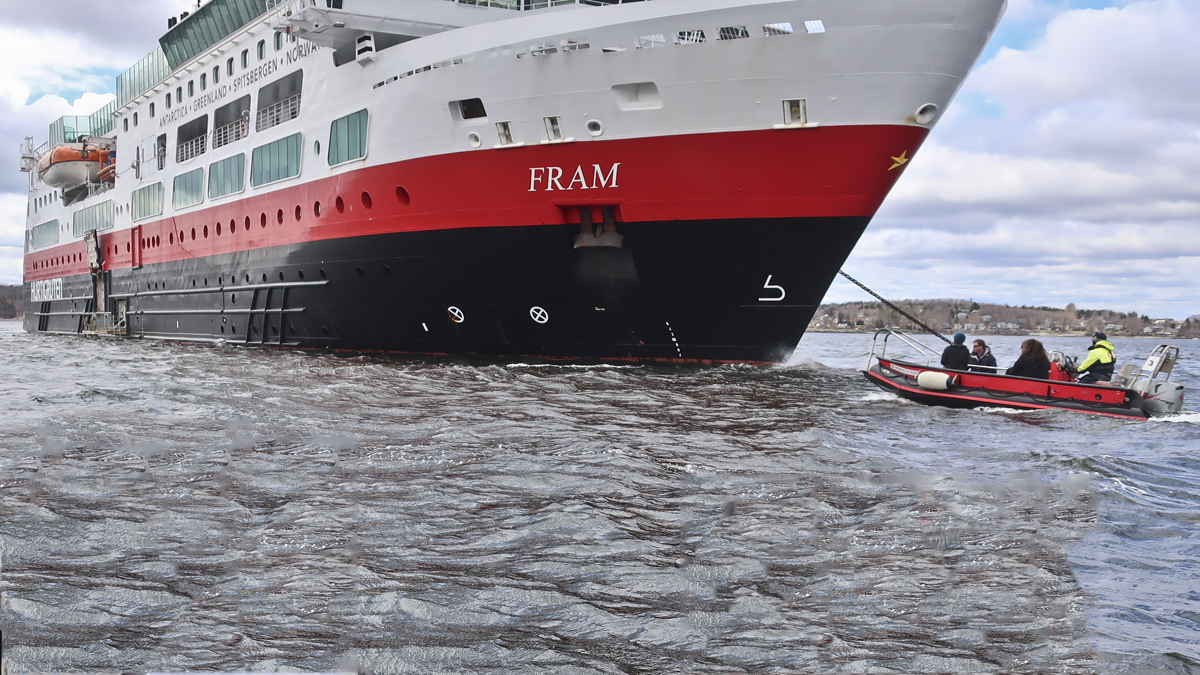
From a long line of hearty seafarers
“Keep in mind, it’s not a cruise, it’s an exploration,” we were told by more than one past guest as we boarded the bright red, white and black ship for a trip from New York to Halifax that included stops in seldom-visited ports and opportunities to go sea kayaking, cliff walking and trail-blazing.
Everywhere in the ship are photos, murals and memorabilia from Norway’s intrepid seafaring tradition. Busts of famed Norwegian Antarctic explorers including Roald Amundsen and Fridtjof Nansen feature prominently in the passageways and elevators. Museum exhibits of photos of stoic crews and ship’s gear line the walls. There’s even a showcase with a century-old bottle of Aquavit that was carried by an expedition to the South Pole.
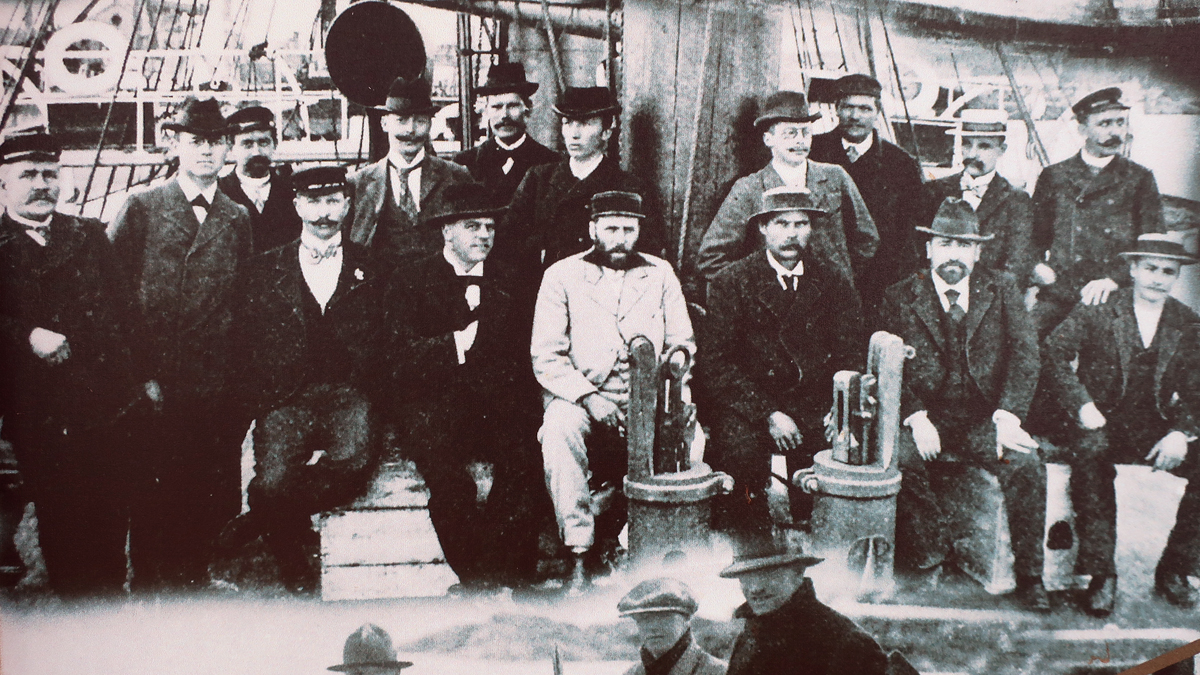
It’s all about being outside
Public areas on Fram are large and designed for watching the passing scenery, with telescopes for zooming in on wildlife and even a lab table equipped with microscopes.
The observation lounge covers half of the ship’s top deck and features floor-to-ceiling picture windows for views in all directions. Deck 5 is also glass enclosed and features the Qilak (Greenlandic for sea) restaurant and Nunami (Greenlandic for land) reception zone where guests can settle in to lounge chairs or sign up for expeditions.
By contrast, most of the cabins are snug, with beds that fold down from the walls for sleeping and large portholes rather than balconies. The thinking seems to be that you’re on board to explore, so why would you want to be in your room during the day?
There’s a lecture hall for daily lectures and briefings in the ship’s working language, English, and a second for presentations in German. Hurtigruten attracts many of its guests from Great Britain and Germany, but has been less familiar west of the Atlantic. Now it’s putting on a push to get on the radar of North Americans. Starting in 2019, Hurtigruten will launch two new hybrid electric ice-breaking ships that carry 550 guests each.
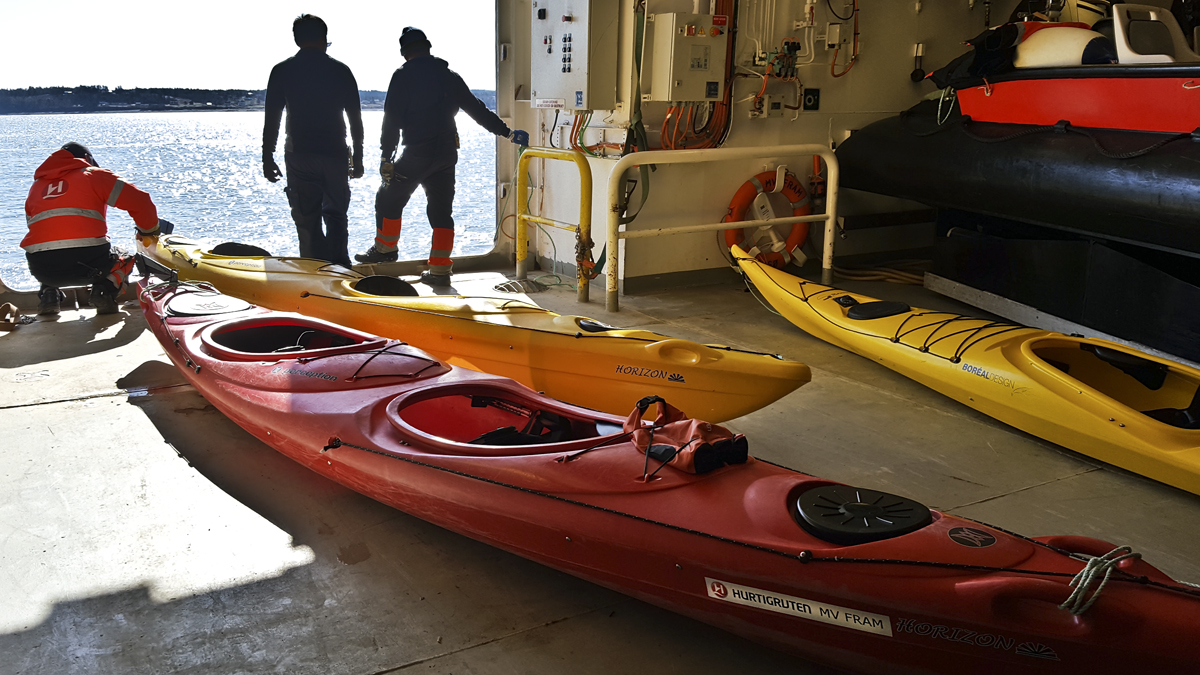
Learning the Norse ways
For those used to traditional cruising, Hurtigruten’s exploration style requires some adjustments. Storage space in staterooms is limited and in an effort to stay as green as possible, there are no washcloths or bathrobes in rooms. They’re phasing out plastics used on board, so filtered water is served at meals and you can either bring your own water bottle or buy a metal one onboard to fill and take on excursions or use in your room. To save on paper, daily programs are displayed on the room TV, but it’s wise to have your own clock or cell phone handy because the TV is set to Oslo time no matter where the ship is sailing.
A calculator is also a handy accessory. Drinks and purchases on board and excursions are priced in in NOK, Norwegian kroner. For example, a draft beer at the bar was 49 NOK, which translates to $6 U.S. Excursions on this itinerary ranged from about 400 NOK ($50 a guest) for a scenic drive or guided walk to 1,295 ($160) for a kayaking trip.
Another foible that can require an adjustment is the fact that although the restaurant tables are meticulously set with linen tablecloths and napkins, there’s never any cutlery set up. Only two meals in a week are served at the table and the rest are buffet-style and diners must remember to pick up the utensils they need for each course. It made for a lot of back and forthing to the buffet zone by people who forgot to grab knives and forks after loading their plates.
There’s also no nighttime entertainment on the cruise. The idea seems to be that if you’re early to bed and get a good night’s sleep, you’ll be ready for an early start for a wildlife trek, kayaking or whale watching. And that, after all, is a large part of the appeal of an exploration cruise. For the less ambitious, the activities also include guided walks and sightseeing bus or boat tours.
Grab a bowl of the daily soup, and don’t forget a spoon as well–Photo by Wallace Immen
Really, really exotic itineraries
Uncharacteristic for Fram, our cruise started in New York and sailed up the east coast to Halifax. But this was an early season repositioning cruise and during the summer months the itineraries include much more remote places that almost no other cruise line has ever visited.
An early June itinerary around Iceland includes places with names like Latrabiang, Isafjordur, Hrisey, Akureyri and Grimsey Island north of the Arctic Circle. Summer sees Fram doing circuits of Greenland and later the Canadian Arctic, including a crossing of the Davis Strait to visit eight islands in Nunavut including Devon Island, and Beechey Island. That itinerary starts in Copenhagen and ends in Montreal.
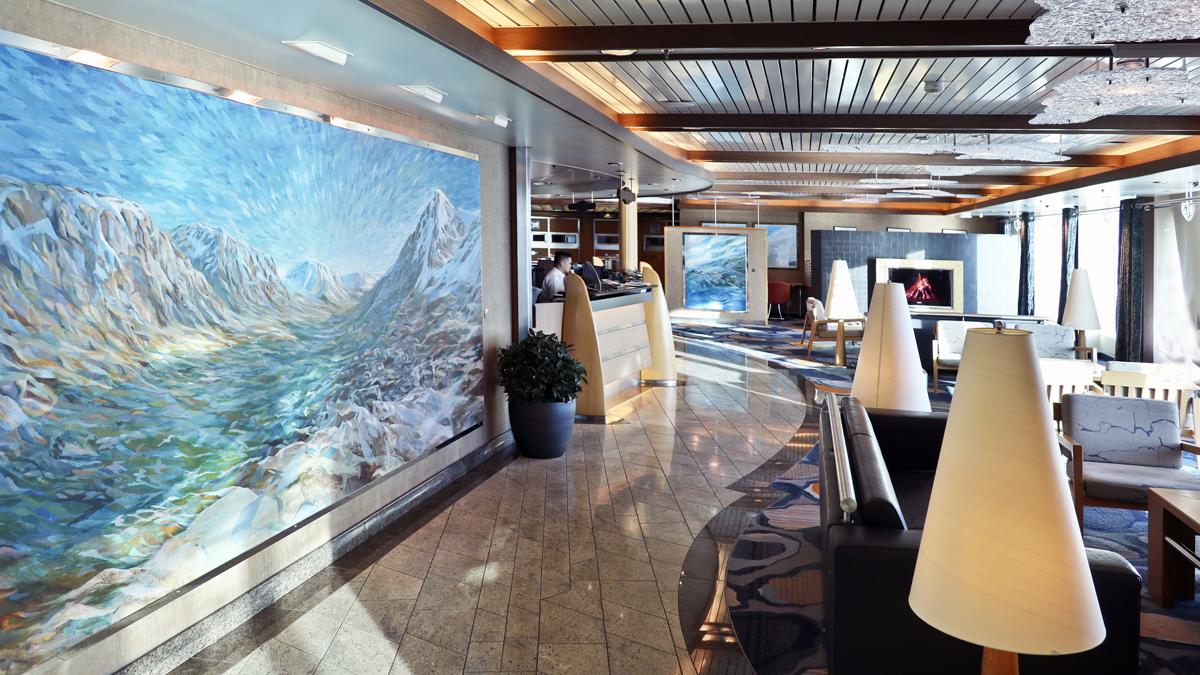
It is, after all, an adventure
But being adventurous can also mean there may be changes of plan. Our spring trip to Halifax had calls at Newport as well as Bar Harbor on the itinerary, but the stop in Newport was called off because of a fierce Nor’easter storm. A day in Boston became three due to technical issues, scrubbing Bar Harbor. Two days in Rockland, Maine became one day, while a maiden call to Eastport, Maine that was not on the original itinerary was added near the end of the cruise.
Most of the passengers–who were after all sailing for the adventure– seemed to take the shuffling plans in stride. But because the changes meant a later than expected arrival in Halifax on the final day, it required rebooking some air itineraries. Good advice might be to add an extra day at the end of an exploration cruise just in case.
There’s certainly a camaraderie that builds in a week on a small ship like Fram, encouraged by a sunny and eager crew. As it turned out, many of the guests on this trip were repeaters and were already planning their next exploration on Hurtigruten.
It’s an escape from the typical cruise experience and one you can get used to.






